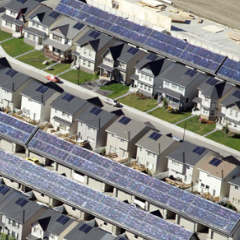It is clear that the solar revolution is sweeping across the globe, with or without governmental incentives. Particularly in North America, the largest job creator in the past year has been singularly the solar industry. But a deeper analysis reveals that most of the growth over the past decade has been in utility-scale sector, although certain states like California, New Jersey, and Pennsylvania lead the way in residential sector as well.
Even in these states, if we look a bit deeper into the residential sector, we find that most of the penetration has been in the mid to upper echelons of society, while leaving out the vast majority of low income communities. Thus, in a sense, solar is still the playground of the rich, in spite of drastically falling costs in the industry, and significant federal, and state level incentives.
Consequently, the affordable housing residents do not have an opportunity to enjoy the savings due to solar installations, nor the health benefits of clean power. To make matters worse, most of the coal plants are located close to low income communities.
We don’t need to look far to find out the reasons for this situation; the residents of low income communities cannot invest any monies toward a solar installation. With a tight budget and nearly 40% or more of the monthly income being spent toward rent, there is very little room for such things as a solar installation.
Although various models of participation in the residential solar revolution are prevalent such as lease, Power Purchase agreements, or ownership, funded via the loan model, none of these options are available to low income residents. How can we ameliorate this situation?
For gaining deeper penetration in the affordable housing market, there needs to be a coalition of local government agencies, non-profits, community service organizations, and churches. This coalition is to be formed, not just for raising funds for deployment of solar, but also for customer education on safety issues, long term maintenance of the asset, prudent use of energy over the life of the system, just to name a few.
The impediments to greater penetration can be classified into 3 categories: financial, utility policies and solar illiteracy. Let us review each of these in detail.


























